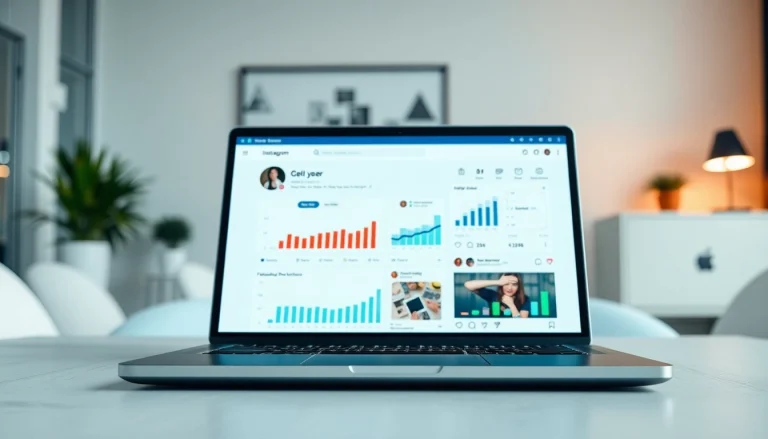Understanding Social Media and Blog Automation
What is Social Media and Blog Automation?
Social media and blog automation refers to the use of software and tools to streamline the creation, scheduling, and distribution of content across various online platforms. This approach enables marketers, bloggers, and businesses to manage their online presence efficiently, ensuring that content reaches the target audience at optimal times without the necessity for constant manual input. By harnessing automation, users can maintain a consistent flow of posts, engage with followers, and enhance their brand visibility, thus driving traffic to their websites and blogs.
Benefits of Social Media and Blog Automation
The benefits of Social media and blog automation are extensive, catering to both individual content creators and large organizations. Here are some key advantages:
- Time Efficiency: Automation significantly reduces the time spent on repetitive tasks such as posting and scheduling content, allowing creators to focus on content quality and engagement.
- Consistent Posting: Regularly scheduled posts help maintain a consistent online presence, which is vital for engaging an audience and improving visibility in search engines.
- Data-Driven Insights: Many automation tools include analytics features that provide valuable insights into audience behavior, allowing users to optimize future content strategies based on performance metrics.
- Cross-Platform Promotion: Automation tools facilitate the simultaneous posting of content across various platforms, ensuring wider reach and engagement.
- Cost-Effective: By utilizing automation tools, businesses can reduce their labor costs associated with social media management, enabling them to allocate resources more effectively.
Common Challenges in Social Media and Blog Automation
While the advantages of automation are clear, several challenges can hinder its effectiveness. Users may encounter:
- Content Quality Concerns: Automated posts can sometimes lack the personal touch that resonates with audiences. It’s important to balance automation with human engagement.
- Platform Limitations: Different social media platforms have varying algorithms and restrictions, which can affect the visibility of automated posts.
- Over-Reliance on Automation: Relying too heavily on automation can lead to a disconnection with the audience, as real-time engagement is crucial for building relationships.
- Technical Issues: Users may face technical difficulties with automation tools, such as bugs or integration problems with other systems, which can disrupt their workflow.
Choosing the Right Tools for Social Media and Blog Automation
Key Features to Look for in Automation Tools
When selecting automation tools for social media and blog management, consider the following features:
- Scheduling Capabilities: The tool should allow users to schedule posts for specific times and dates to cater to audience peak activity.
- Analytics and Reporting: Tools should provide insights into post-performance, audience engagement, and overall effectiveness, helping users refine their content strategies.
- User-Friendliness: A straightforward interface helps ensure that both novices and experienced users can navigate the tool with ease.
- Integration: The ability to connect with other tools and platforms (e.g., email marketing, customer relationship management) is crucial for seamless workflow.
- Content Curation: Look for tools that help discover and curate relevant content, which can enhance engagement and provide value to the audience.
Comparing Popular Automation Tools
Numerous social media and blog automation tools are available, each with unique features. Here’s a comparative analysis:
- Hootsuite: Known for its robust scheduling and analytics features, Hootsuite enables users to manage multiple social media accounts from one dashboard.
- Buffer: Recognized for its simplicity, Buffer focuses on enabling users to schedule posts quickly while providing basic analytics.
- Zapier: This tool excels at connecting various applications, allowing users to automate workflows by creating “zaps” that trigger actions across different platforms.
- SocialBee: A more comprehensive tool, SocialBee combines scheduling, content curation, and analytics, offering an all-in-one solution for social media management.
Integrating Tools into Your Workflow
Integrating automation tools into your content creation process requires thoughtful planning and execution. Here are steps to effectively incorporate these tools:
- Assess Your Needs: Identify what tasks are most time-consuming and how automation can alleviate these burdens.
- Choose the Right Tools: Evaluate various automation tools against your specific needs and select those that align best with your goals.
- Create a Strategic Plan: Develop a content calendar that defines what, when, and where content will be published, ensuring a cohesive strategy.
- Monitor and Adjust: Regularly review the performance of automated posts and make necessary adjustments to your strategy based on data insights.
Setting Up Your Social Media and Blog Automation
Creating a Content Calendar
A content calendar is pivotal in managing social media and blog automation effectively. A well-structured calendar includes:
- Content Topics: Outline the topics you intend to address, ensuring they align with audience interests and industry trends.
- Scheduling Details: Specify when each piece will be published, considering peak times to maximize audience engagement.
- Responsible Parties: If you work with a team, assign specific roles for content creation, approval, and posting to ensure accountability.
Scheduling Posts for Maximum Reach
Timing is critical in social media engagement. Here are strategies to effectively schedule posts:
- Analyze Audience Behavior: Use analytics tools to determine when your audience is most active online.
- Experiment with Timing: A/B test different posting times to see when you receive the best engagement rates.
- Utilize Scheduling Tools: Leverage automation tools that allow you to schedule posts in advance according to your research on optimal timing.
Tracking Performance Metrics
Measuring performance is crucial for evaluating the success of your social media and blog automation efforts. Key metrics to track include:
- Engagement Rate: Analyze likes, shares, comments, and overall engagement to understand content performance.
- Website Traffic: Monitor referrals from social media posts to your blog or website, assessing the impact of your automation on driving traffic.
- Conversion Rates: Evaluate how effectively your posts lead to desired actions, such as signing up for newsletters or making purchases.
Optimizing Your Strategy for Social Media and Blog Automation
Improving Engagement with Data-Driven Insights
Utilizing data insights is vital for improving engagement rates over time. Consider these strategies:
- Audience Segmentation: Tailor content to specific segments of your audience based on their preferences and behaviors.
- Content Performance Analysis: Regularly review which types of content generate the most engagement and replicate successful formats.
- User Feedback: Encourage followers to share feedback on what types of content they enjoy and adapt accordingly.
A/B Testing Your Content for Better Results
A/B testing allows you to experiment with different versions of your content to determine which resonates better with your audience. Key steps include:
- Define Variables: Choose specific elements to test, such as headlines, images, or call-to-action phrases.
- Create Two Versions: Develop two variations of your content, altering only one element to measure changes in performance.
- Analyze Results: Use analytics tools to determine which version performed better and use these insights to inform future content.
Adapting to Trends and Audience Feedback
Staying attuned to changing trends and audience feedback is vital for sustaining engagement. Strategies include:
- Regular Trend Analysis: Subscribe to industry news and trends to ensure your content remains relevant.
- Audience Polls: Conduct polls or surveys to gauge audience interests and adapt your content schedule accordingly.
- Flexibility: Be prepared to adjust your content strategy based on real-time feedback and metrics, ensuring you remain in tune with your audience’s evolving preferences.
Future Trends in Social Media and Blog Automation
AI and Emerging Technologies in Automation
Artificial intelligence (AI) is expected to play an increasingly significant role in social media and blog automation. Future trends may include:
- Advanced Content Creation: AI-driven tools can help generate content ideas, draft posts, and even analyze sentiment to refine messaging.
- Chat Bots for Engagement: Implementing AI chatbots can enhance real-time interactions with followers, providing immediate responses to inquiries.
- Enhanced Personalization: AI can analyze user behavior to deliver highly personalized content to audiences, optimizing engagement rates.
Personalization in Content Delivery
As audiences grow increasingly sophisticated, the demand for personalized content delivery is mounting. Future strategies may involve:
- Dynamic Content: Using audience data to customize content in real-time based on user profiles and past interactions.
- Personalized Email Campaigns: Segmenting audiences to deliver tailored email content that meets individual interests and encourages action.
- User-Generated Content: Encouraging user-generated content can foster a sense of community and enhance the personalization of your brand message.
The Growing Importance of Video in Automation
Video content is becoming increasingly vital in digital marketing strategies, and automation tools are adapting to this trend. Here’s how:
- Automated Video Creation: Tools that allow for quick video creation from text or image inputs can save time and enhance content offerings.
- Video Scheduling: Social media automation tools are now allowing video posts to be scheduled, ensuring timely delivery aligned with audience engagement.
- Integration of Live Content: The rise of live streaming is prompting automation tools to incorporate features that facilitate real-time engagement through video.







